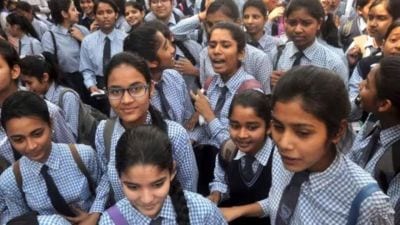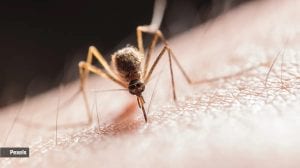- India
- International
Hand, Foot, and Mouth Disease: symptoms, treatment and prevention, explained
Hand, Foot, and Mouth Disease: Hand-Foot-Mouth Disease (HFMD) is a common childhood illness caused by a virus.
 What Is Hand, Foot, and Mouth Disease (HFMD): Hand, Foot, and Mouth Disease is common in children under the age of 5, but anyone can get it. (Source: Getty Images)
What Is Hand, Foot, and Mouth Disease (HFMD): Hand, Foot, and Mouth Disease is common in children under the age of 5, but anyone can get it. (Source: Getty Images)Hand, Foot, and Mouth Disease explained: There has been a spike in cases of Hand, Foot, and Mouth Disease (HFMD) in Mumbai. As per data provided by the state’s public health department, till August 28, Maharashtra has reported 250 cases of hand-foot-and-mouth disease. Of the total cases reported in the state, all but one were from Mumbai circle.
But, as HFMD is not a notifiable disease, the state doesn’t have cumulative data from private hospitals which share most of the caseload.
Doctors have advised the public not to panic, as HFMD is a self-limiting disease and most patients recover within a week.
What is Hand, Foot, and Mouth Disease, and how does it spread?
Hand, Foot, and Mouth Disease is common in children under the age of 5, but anyone can get it. It is most commonly caused by a coxsackievirus, which belongs to a group of viruses called nonpolio enteroviruses. The illness is usually not serious, but is very contagious. It spreads quickly at schools and daycare centers.
Dr Mukesh Agrawal, former head of the paediatric department at King Edward Memorial (KEM) Hospital, Parel, said, “It spreads through person-to-person contact when an infected person’s nose secretions or throat discharge, saliva, fluid from blisters, stool or respiratory droplets are sprayed into the air after a cough or sneeze.”

“But, in most cases, it doesn’t require hospitalisation,” he added.
Why is there a rise in Hand, Foot, and Mouth Disease this year?
Compared to the previous year, doctors, especially from private hospitals, are witnessing a two-fold rise in Hand, Foot, and Mouth Disease cases.
Dr Kiran Sathe, consultant pediatric nephrology from HN Reliance Hospital, is handling 1-2 cases per week on OPD.
Dr Tushar Maniar, head of child health unit at Nanavati Hospital, said he gets 8-10 patients daily, but most don’t need to visit the hospital and can be treated effectively by medication. “During the last two years, schools were shut and HFMD being a highly infectious disease, had less scope to spread among the larger paediatric population. The rise in cases this year can be attributed to re-opening of the schools and possibly a different, more infectious strain,” Dr Maniar said.
Dr Asmita Mahajan, Consultant Neonatologist & Pediatrician, SL Raheja Hospital, Mahim said parents are unaware of this disease and continue sending their kids to school even if they show symptoms. “The increase in current cases is mainly due to the highly infectious nature of this viral illness,” she said.
What are the profiles of patients with Hand, Foot, and Mouth Disease?
City doctors claim that a large number of children below the age of 5 are contracting the infection. The most common age group is 3-4 years.
Dr Kiran Sathe said most of the children have very high fever. “Some children are coming to us with chickenpox-like lesions, but the distribution is limited only to hands and mouths. Whereas, in chickenpox, the lesions are mostly in the chest and abdomen,” he said.
Dr Mahajan said she has treated 10-15 children with Hand, Foot, and Mouth Disease. “Since HFMD is contagious, siblings also tend to get the disease, as they live in close contact with each other.”
The usual period from initial infection to the time symptoms appear among patients, which is also called the incubation period, is between 3-6 days.
One significant feature of the illness this time is a recurrence of the disease in the same child. “Some kids have also developed rashes repeatedly 2-3 times after a month or two,” said Dr Mahajan.
Are children with HFMD requiring hospitalisation?
A majority of children have recovered at home and rarely require hospitalisation. As it is a self-limited illness, the symptoms last up to 7-10 days and fade away.
However, doctors also cautioned to keep a close eye on children with weak immunity or who haven’t improved even after 10 days. “Some children may develop complications due to dehydration because of poor oral intake. Also, they may develop viral meningitis, encephalitis, paralysis and loss of nails,” said Dr Verma.
The child may need admission only if there is a severely reduced oral intake or persistent high fever.
What are symptoms, treatment for Hand, Foot, and Mouth Disease?
Patients usually develop fever, sore throat, painful blister-like lesions on the tongue, gums and inside of the cheeks. “The children may develop ulcers inside their mouths. Also, rashes are noticed on the palms, soles and sometimes the buttocks,” said Dr Bela Verma, head of the paediatric department at JJ hospital.
Children are mostly treated with anti-allergic medicines and ointments. The lesions usually disappear in five to six days. “Drink enough liquids. Mouth sores can make it painful to swallow, so your child may not want to drink much. Make sure they drink enough to stay hydrated,” stated the Centre for Disease Control and Prevention (CDC).
Can HFMD be prevented?
After almost two years, schools are functioning at full swing. So, doctors believe that due to the mingling of the children without masks, the virus is spreading faster.
“Just a precaution, children should follow the guidelines laid for Covid-appropriate behaviour like washing hands and wearing masks,” said Dr Agarwal. “They should wash their hands with soap for at least 20 seconds. In the absence of soap, use alcohol-based hand sanitizers,” he added.
The CDC has instructed people to wash their hands
* After changing diapers
* After using the toilet
* After blowing your nose, coughing, or sneezing
* Before and after caring for someone who is sick
It also advises helping children wash their hands, teaching them how to wash their hands, and making sure they wash their hands often.
More Explained
EXPRESS OPINION
May 09: Latest News
- 01
- 02
- 03
- 04
- 05







































